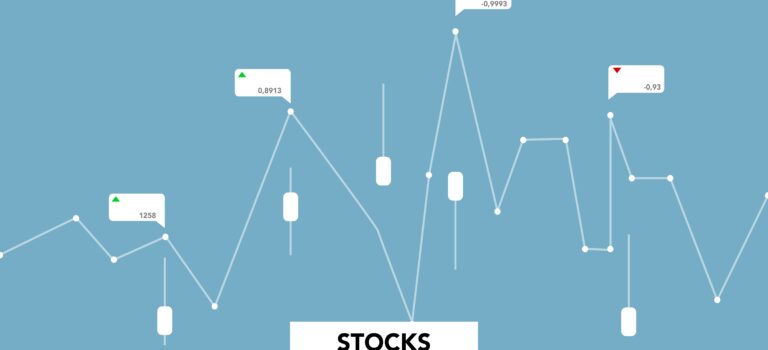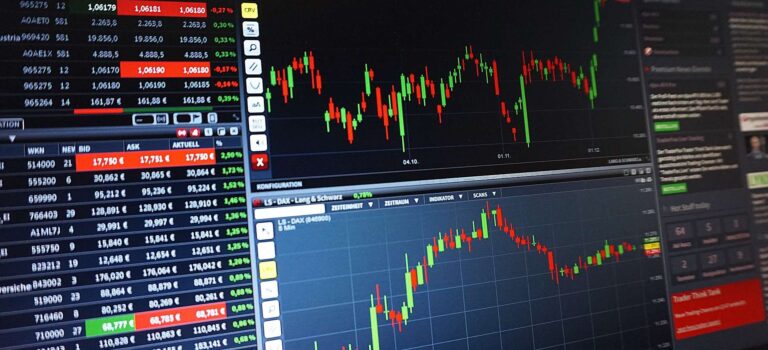The Investor Guide to Fidelity Funds for October 2022 is AVAILABLE NOW! October Data Files Are Posted Below Market Perspective: Interest Rates Continue to Pressure Equity Prices Equities extended their slump […]


The Investor Guide to Fidelity Funds for October 2022 is AVAILABLE NOW! October Data Files Are Posted Below Market Perspective: Interest Rates Continue to Pressure Equity Prices Equities extended their slump […]

It was another depressing and down week for the major stock market indexes.
On Friday, the Dow Jones Industrial Average dropped 500.10 points or 1.71 percent, finishing at 28,725.52, closing under 29,900 for the first time since November 2020. The Nasdaq Composite dropped 1.51 percent, and the S&P 500 lost 1.51 percent, dropping to 3,585.62.
For the week, it was red across all major market averages. The Dow lost 2.9 percent, the S&P 500 fell 2.9 percent, and the Nasdaq Composite was down 2.7 percent.
Friday was the last day of the third quarter and typical of the entire month. For September, the Dow fell 8.8 percent, the S&P 500 lost 9.3 percent, and the Nasdaq tumbled 10.5 percent.
The S&P 500 index finished its worst month since March 2020, at the start of the pandemic and lockdowns. For the year, the Dow Jones Industrial Average is down 20.9 percent, and the Nasdaq Composite has tumbled 32.4 percent.
The Dow Jones Industrial Average with the S&P 500 and Nasdaq are all three in bear market territory. The Dow has declined more than 20 percent from its level in early January.
With rising interest rates, it has not been a good year for the bond market either. Bonds were down 1.0 percent last week, closing at $96.26, down 14.1 percent for the year.
Last week was a volatile week in the bond market, especially for the 10-year U.S. Treasury. The yield on the 10-year Treasury surged Tuesday to as high as 3.99 percent, its highest level in 14 years. During the next day’s trading session, the 10-year dropped to 3.71 percent, finally closing at 3.829 percent on Friday.
Adding to the down markets was a downgrade of Apple stock. Bank of America analyst Wamsi Mohan dropped their rating to a neutral from a buy. Apple shares fell nearly 5 percent, dragging dow
Mohan cited several risks with Apple stock, including a weaker buying cycle associated with the Apple iPhone 14, which Apple released last month. The day before, it was reported that Apple had dropped its plan to boost Apple iPhone production by 6 million units in the second half of 2022.
The Apple downgrade also took other tech stocks with it. Microsoft saw the smallest blow to its stock, which closed down about 1.5 percent, reaching a 52-week low. The parent company, Alphabet dropped 2.6 percent, also reaching a 52-week low. The Facebook parent company, Meta Platforms fell 3.7 percent, Amazon was off 2.7 percent, and Tesla tumbled 6.8 percent
Personal income increased 0.3 percent, as expected. Spending went up 0.4 percent after showing a decline of 0.2 percent in July. Inflation appears to be broadening with headline inflation, which includes food and energy, also sped up, despite a sharp drop in gasoline prices.
When the Federal Reserve started its fight against inflation, Federal Reserve Chairman Jerome Powell said that he wanted to cool off the housing market, and the labor market to help fight inflation. So far, the housing market has cooled very slightly, but rents remain high. Both go into the shelter category and are counted heavily in the consumer price index (CPI).
Last week, the initial filings for unemployment claims came in hotter than expected, which is not what the Federal Reserve wants to see. The initial unemployment claims fell to their lowest level n five months. Jobless claims totaled 193,000, down from 16,000 from the previous weekly report, below the estimated 215,000.
This week’s upcoming economic reports include:

Click Here to view today’s Global Momentum Guide WEEKLY SECTOR MOVERS The Russell 2000 Index declined 0.89 percent last week, the MSCI EAFE 1.57 percent, the Nasdaq 2.69 percent, […]

The September Issue of the ETF Investor Guide is AVAILABLE NOW! Links to the September Data Files have been posted below. Market Perspective: Inflation and Higher Interest Rates Spook Equities Equities […]

It was another troubling week for the major market indexes, capped off by a brutal Friday. The market turmoil has been blamed on rising interest rates, and the markets are very concerned about the Fed pushing us into a recession.
Stocks were smacked on Friday, with the Dow Industrial Average losing 486.27 points or 1.62 percent. The S&P 500 fell 1.72 percent, and the Nasdaq Composite tumbled 1.8 percent. That marks the fifth out of six weeks that the major market indexes finished in the red. At one point during Friday’s, trading session, the Dow was down over 826 points.
For the week, the Dow Jones Industrial Average dropped 4 percent, the S&P 500 gave up 4.6 percent, and the Nasdaq Composite lost another 5.1 percent. The Dow hit a new low for the year, closing below 30,000 for the first time since back on June 17. The Dow ended the day 19.9 percent below their intraday record, putting it near bear market territory.
Year-to-date, the Dow Jones Industrial Average has lost 18.6 percent, the S&P 500 is down by 22.5 percent, and the Nasdaq Composite has lost a whopping 30.5 percent.
After the Federal Reserve’s interest rate hike by 3/4 of a percent, the markets started to slide. Even though the 75 basis point increase was widely anticipated, stocks continue to fall. Stocks did continue to move lower all week, mainly because of the Fed’s comments on its outlook for further rate hikes.
The Federal Reserve now expects to keep rates higher for longer in the continued effort to fight inflation. It is now clear to the markets that the Fed is willing to cause some pain in the economy to stop consumer prices from continuing to rise.
Even though the Fed was trying for a soft landing and a strong economy, they now seem to have accepted that a meaningful slowdown of the economy is necessary for inflation to drop to a comfortable rate.
These comments changed expectations on Wall Street that the Fed funds policy rate will now peak at 4.5 percent and a little higher. To achieve that, the Fed will have to raise rates more than 1 percent higher from where they stand currently.
All of this has only increased the fears that the chances of a deeper recession possible. Now that the markets are expecting and pricing in a recession, a recession doesn’t have to mean market prices will continue their downward trend.
The Federal Reserve indicated they will continue rate hikes until they hit 4.6 percent at some point in 2023 to meet this goal, it implied a 25 basis point hike in 2023, without decreasing rates next year. The 4.6 percent rate is known as the terminal rate or the endpoint. The Fed funds rate now stands at a range of 3 percent to 3.5 percent, the highest rate since early 2008.
Federal Reserve Chairman Jerome Powell said at his post-rate hike news conference, “My main message has not changed since Jackson Hole. The FOMC is strongly resolved to bring inflation down to 2 percent, and we will keep at it until the job is done.”
Bonds are now in their worst bear market since 1949. Bonds were down 1.6 percent last week and down 13.3 percent for the year. As yields on bonds continue to rise, bonds are selling off.
And adding to fears of an upcoming recession, the yield curve remains inverted. The yield on the 2-year U.S. Treasury is 4.2 percent, and the yield on the 10-year U.S. Treasury at 3.68 percent.
The housing market continues to slow. According to the National Association of Realtors, sales of previously owned homes dropped 0.4 percent in August from July. Other than the short pandemic dip, this is the slowest pace since November 2015.
Interest rates are making homes less affordable and prices are still higher than a year ago. In some cities, prices are coming down, but in other cities, prices are rising, just not as fast as last year. The median price of an existing home sold in August 2022 was $389,500, up 7.7 percent from August 2021.
Home sales fell in all home price categories but were more noticeable in the lower price range. Sales of homes priced between $250,000 and $500,000 are down 14 percent year-over-year. Sales of homes priced between $750,000 and $1 million were down only 3 percent.
The lower supply of lower-priced homes compared to homes in the higher price categories could also be partially to blame for this. Fewer homes for sale mean fewer home sales.
Home prices are still being supported by tight supply. At the end of August, there were 1.28 million homes for sale. At the current sales pace, that is a 3.2-month supply. Not helping the supply situation is homebuilders are slowing down because of falling demand.
Mortgage rates spiked after the Fed’s recent rate hike. The average U.S. 30-year fixed rate mortgage is at 6.3 percent, up 0.271 percent for the week and up 3.41 percent for the year.